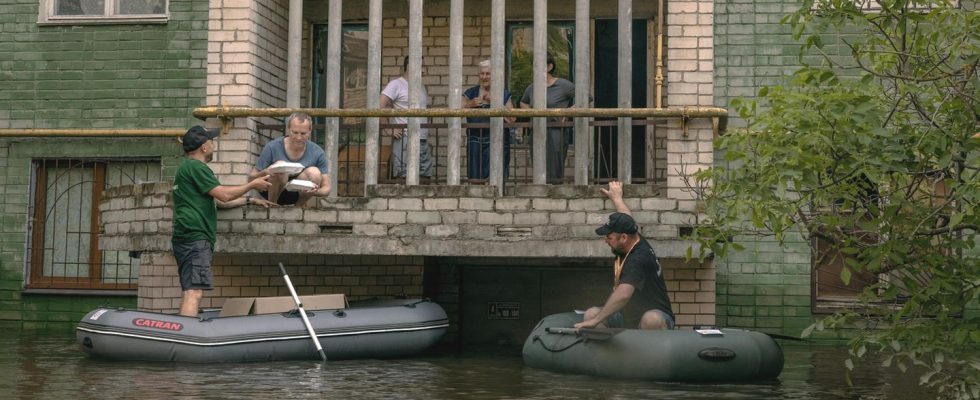Five days after the destruction of the Kakhovka Dam in southern Ukraine, the situation in the flooded areas remains tense. Although the water level in the affected regions below the destroyed dam is falling again, more than 30 settlements on the Ukrainian-controlled side of the Dnipro are still flooded, the head of the Ukrainian military administration in Kherson said on Saturday.
According to the authorities, the Dnipro reservoir has now lost more than a third of the flood water that accumulated in the spring. “As of 12 noon on June 10, the level of the Kakhovka reservoir in the Nikopol area has dropped to 10.2 meters,” Ukrainian hydroelectric utility Ukrhidroenerho wrote on its Telegram channel. According to the operator, the hydroelectric power plants work at half power.
At the same time, Ukrhidroenerho announced that more water is now being dammed up in the upper reaches of the Dnipro in order to be able to generate electricity in the summer. As the third largest river in Europe, the Dnipro is dammed at six points in Ukraine for electricity production.
“Cities, infrastructure, entire industries must be rebuilt”
The Ukrainian ambassador to Germany, Oleksii Makeiev, fears that the floods will cause billions of euros in damage to people, the environment and agriculture. “Cities, infrastructure, entire industries have to be rebuilt,” the diplomat told the newspapers of the Funke media group. “The overall damage will not be visible until the water has drained.”
According to Makeiev, the reconstruction costs for Ukraine this year alone amount to 14.1 billion dollars (around 13 billion euros). “Of this, $3.3 billion has already been made available in Ukraine’s budget. Everything is needed, from drinking water filters to inflatable boats,” said the ambassador.
Makeiev also worries about fishing and agriculture in the flooded region. “The losses to fisheries due to the loss of all biological resources will be severe. One fish kill has already been recorded in the Kherson region,” he said. The grain industry in particular is now struggling. “More than 20,000 hectares of agricultural land, on which Ukrainian vegetable growing was concentrated, have been idle for many years,” Makeiev said. “The grain stores are under water. Only a few ships in the Black Sea ports that supply grain to the whole world can be loaded.” The flooding has blocked transport routes, and the closure of the ports in the Black and Azov Seas “is causing massive damage to many small and medium-sized companies”.
The Endless Battle
New satellite images document the total destruction in the hard-fought area of Bachmut
In addition to economic concerns, the Ukrainian ambassador also mentions a potential danger to people from mines. “Russia has laid many of the internationally banned anti-personnel mines on the banks of the Dnipro. The flooding also caught these mines, which can explode at any time,” Makeiev said.
The Kachowka dam on the Dnipro River in Russian-occupied territory was destroyed on Tuesday night, and large amounts of water escaped. Thousands of people had to leave their homes. Kiev and Moscow accuse each other of being responsible for the incident.

